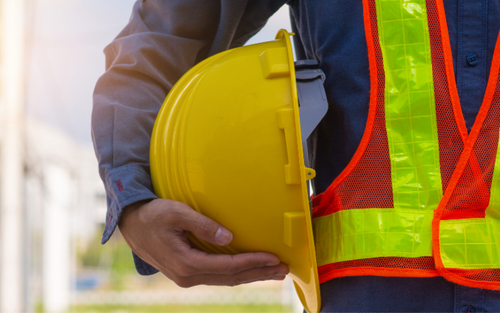Types & Classes of Helmets & Hard Hats

OSHA requires every worker to wear head protection if at least one of the following conditions are met at a worksite:
- Objects could fall from above to strike employees on the head;
- Employees could bump their heads against fixed objects;
- Someone’s head could come into contact with an electrical hazard.
Head protection varies for different jobs. Some are more specialized and rated better for particular jobs than others. ANSI rates helmets and hard hats by protection level and features. Types and classes of hard hats make it easier for you to find what you’re looking for—and we’ve broken it down to the basics.
Type 1
These helmets and hard hats reduce the force of impact from a blow to the top of the head only—think of a tool falling from a higher level at a construction site.
Type 2
These helmets and hard hats reduce the force of impact from a blow to the top or sides of the head. In addition to falling tools, consider exposed pipes, side beams, or other hazards.
Class C (Conductive)
These helmets and hard hats are not intended to protect against contact with electrical hazards. However, they may include venting and other options not available in helmets or hard hats that provide electrical protection.
Class G (General)
These helmets and hard hats are intended to reduce the danger of contact with low-voltage conductors and electrical hazards to the head only—they’re proof-tested at 2,200 volts.
Class E (Electrical)
These helmets and hard hats are intended to reduce the danger of contact with higher voltage conductors and hazards to the head only—they’re proof-tested at 20,000 volts.
Regardless of what type and class of helmet you need for the job, remember to get one that fits your hazards and your employee’s heads—look for chin straps and adjustable headbands for a secure fit. If high visibility is a priority, reflective striping or lights can be added for nighttime or extreme weather. Full brims are good for bright days and airflow vents for hot ones.
Always pay attention to the labels and manufacturer guidelines for the care, keeping, and disposal of your helmets and hard hats!
PK Safety has been your workplace safety partner for decades. Contact us online or by phone at 800-829-9580 with your questions about hard hats or safety workwear!
Recent Posts
-
Customizing Gas Detectors: Tailoring Solutions to Fit Your Unique Requirements
In today’s diverse industrial landscape, a one-size-fits-all approach to safety simply doesn’t cu …Jul 3rd 2024 -
10 Ways to Prevent Wildfires
You can prevent wildfires by extinguishing flames before you leave the worksite. Avoid practicing …Jul 1st 2024 -
ANSI/ISEA 138 Safety Gloves: Ensuring Hand Protection
The human hand is an anatomical masterpiece and arguably the greatest tool attached to our bodies …Jun 25th 2024





